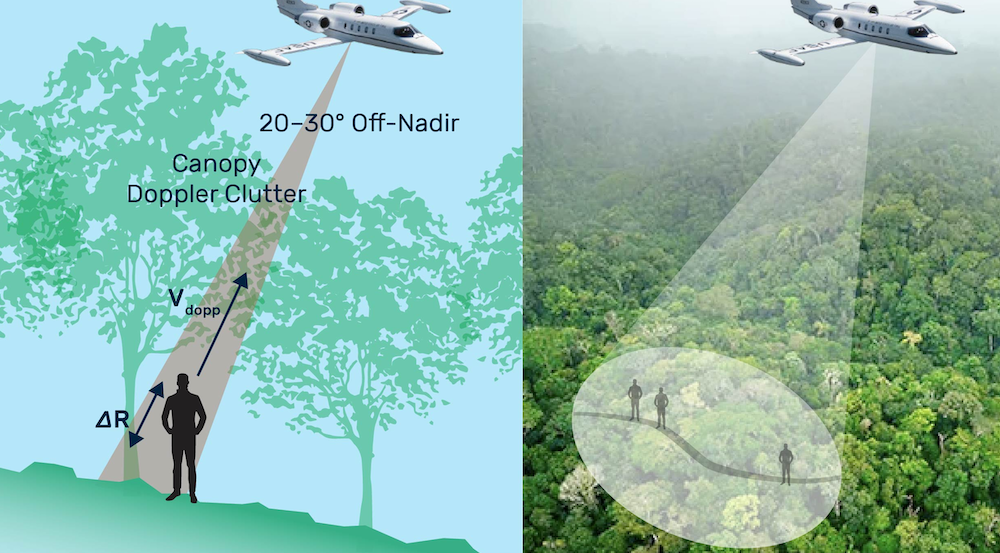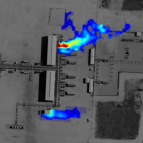Finding People Under the Rainforest Roof with Lidar

Foliage-penetration lidar systems enable viewing of structures such as buildings, roads, and parked vehicles under the rainforest canopy. Also called the roof of the rainforest, the canopy is about a 20-foot-thick layer that features a dense tangle of trees, vines, and leaves. However, existing systems cannot currently detect the presence of humans under canopy, creating ambiguity as to whether people are actively using or have abandoned an identified structure. To remove this ambiguity, the Laboratory seeks to develop a Doppler-sensing lidar capable of detecting a unique human motion “signature,” distinct from the natural motion of plants and animals in the rainforest. For example, the motion of a human arm swing would be detectable because of the unique Doppler shift (apparent change in frequency of a wave to an observer moving relative to the wave source) that it imparts on a laser beam.
The Laboratory research team has been assessing the technical challenges associated with building a system of this kind. They are considering previously unexplored phenomenology of foliage-penetration lidar, such as the spatial distribution of canopy holes that allow lasers to “peek” through to the ground below. They are also considering the dynamics of flying such a system, including how the motion of the aircraft itself may influence the measured signal from a human on the ground. In addition, the researchers have partnered with the Laboratory’s Sensorimotor Technology Realization in Immersive Virtual Environments (STRIVE) Center to collect down-looking lidar measurements of walking humans. These measurements are providing critical data on the way that human motion will appear to a lidar sensor flying overhead. The team is currently building a proof-of-concept airborne demonstrator of the system. Field tests are scheduled for summer 2025, and the results will inform the design of a future field-ready system.
